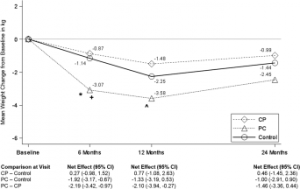One of the most vivid memories I have from childhood is of the time my brother ate dirt. He was an adventurous child when it came to eating non-traditional foods, like cork, stickers, receipts, and yes, dirt. I remember sitting on my kitchen floor drawing, only to glance into the other room to see my brother, younger than me by three years, munching down on the potting soil from a rather large plant my mom had placed on the floor. Quickly, my mother noticed, and washed his mouth out, telling him eating dirt was bad for him and that he shouldn’t do it.
This is probably something we’ve all heard as children. Parents and teachers are certainly not to be faulted for telling us to avoid chowing down on our favorite brand of soil, whether it be sandy silty loam or the limestone heavy soil we have in this part of the state. The reason for this fear of eating dirt is because of the many potential parasites found in dirt, such as intestinal worms. Parents, wishing to protect their children from the problems that arise from the contraction of parasitic bodies, feel as though the best way to do that is to keep them from eating dirt. Additionally, it is mostly traditional wisdom that eating dirt is ill-advised.
Science is anti-authoritarian in nature, however, so it would make sense that a recent meta-analysis was published claiming that there may be some benefits to eating dirt, at least under certain conditions. This study was mostly conducted by viewing over many various recorded instances of people eating dirt, many of which were anthropological accounts. By it’s conclusion, some 480 reports of dirt consumption were found, including the earliest ever recorded, by Hippocrates in ancient Greece.
The null hypothesis of this study would be that eating dirt served no benefit to people, and the alternative hypothesis would be that it had at least some positive health benefit. Researches were a little unsure about exactly what benefit it would yield, if any. The first thing they looked for was people who ate dirt to fulfill their nutritional needs, which seemed to be faulty, as the majority of dirt eating accounts came from people who ate clay, which is not very high in many essential nutrients, except calcium.
The next possible reason they looked for in eating clay was for satisfaction, especially in instances where food was scarce. This was also found to be unlikely, as many of the counts of eating dirt came from societies where food was plentiful.
The conclusion that the conductors of this meta analysis eventually came to was for protection from possible pathogens and parasites. Eating the dirt directly is supposed to act as a deterrent, to build up one’s immune system. This was supported by the fact that most accounts of consumption of this bizarre food were in pregnant women and younger children, like my brother when he ate the dirt. People at these stages in their lives have weakened immune systems, as stated in this study. The researchers of the dirt study are quick to point out,  however, that most of the soil people eat comes from deeper layers, and parasites usually live near the surface. Additionally, they are also quick to note that it is common practice to boil the dirt prior to consumption, which leads me to wonder how this helps to build up immunities.
however, that most of the soil people eat comes from deeper layers, and parasites usually live near the surface. Additionally, they are also quick to note that it is common practice to boil the dirt prior to consumption, which leads me to wonder how this helps to build up immunities.
This correlation found between the building of immunities and the consumption of dirt could be explained one of four ways:
Direct Causality- The consumption of dirt causes the build up of immunities against pathogens and parasites.
Reverse Causality- The build up of immunities against pathogens and parasites causes people to consume dirt.
Third Variable- The consumption of dirt and the build up of immunities against pathogens and parasites are separate events, each caused by something separate.
Chance
It would seem as though the researchers want us to believe that direct causality is responsible for the relationship between the two variables, but seeing as though this is a meta analysis, composed mainly of anecdotal accounts of dirt consumption, I feel as though much more research needs to be conducted involving this correlation. Perhaps an experimental study would provide the clearest picture of whether or not there is a causal link between the consumption of dirt and protection from pathogens and parasites. Although that may not be feasible, as feeding participants dirt could result in an ethical grey-area, as putting people at risk for parasitic infections is probably dangerous.
Still, the data of the meta analysis seems to support its alternative hypothesis, and one must accept the data in order to avoid a false negative. So, at least until further research is conducted, it would appear that eating dirt could help you build up immunities to pathogens and parasites, although it would seem wise to take it from deeper within the ground, and perhaps even to boil it first.












